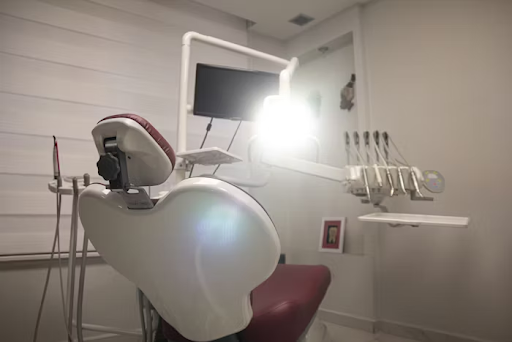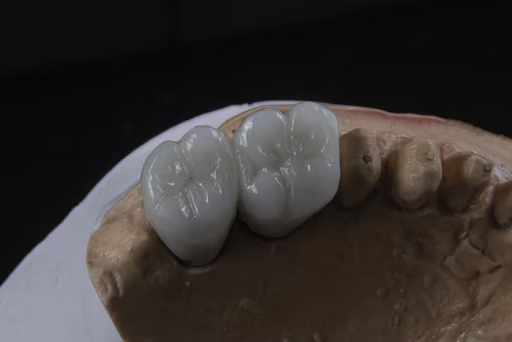If you’ve been weighing dental implants in McLean against traditional dentures, you’re not alone. Over the last decade, implants have moved from niche to mainstream, driven by better materials, smarter digital planning, and a focus on long-term oral health. This isn’t a sales pitch—it’s a look at why implants are winning the everyday comparison, what they actually involve, and how people in Northern Virginia can think through the decision with clarity.
Implants vs. Dentures: What’s Changed and Why It Matters
For years, dentures were the default solution for missing teeth. They’re removable, relatively quick to make, and initially affordable. But modern implants change the baseline:
- Stability and function. Implants are anchored into the jawbone, so they don’t slip during a meeting, a run on the W&OD Trail, or dinner with friends. Chewing feels closer to natural teeth.
- Bone preservation. When you lose a tooth, the jawbone slowly resorbs. Implants stimulate the bone (like a natural root), helping preserve facial structure and preventing the “sunken” look that can develop over time with dentures.
- Everyday confidence. Because implants are fixed, there’s no adhesive ritual, no worrying about clicking, and no sudden movement when you laugh.
Dentures absolutely have a place—especially for temporary or budget-sensitive situations—but the everyday experience of implants often outperforms.
The Everyday Advantages You Actually Notice
1) Eating the food you love
With well-integrated implants, you can typically bite and chew more comfortably than with removable dentures. That means crisp apples, steak at a special occasion, or corn on the cob at a backyard cookout—without second-guessing your bite.
2) Clear speech, less fuss
Even well-made dentures can slightly alter speech, especially at first. Implants don’t cover the palate or shift, so your articulation tends to feel natural.
3) Routine care, not special care
Implant-supported crowns or bridges are cleaned much like natural teeth. You’ll brush and floss (with a few technique tweaks your hygienist will show you), schedule routine preventive visits, and carry on.
Cost vs. Longevity: A Wider-Angle View
Upfront, implants cost more than traditional dentures. That’s real and worth acknowledging. But longevity changes the math:
- Durability. With good care, implant fixtures (the parts in the bone) can last many years—often decades. Crowns and abutments may need periodic maintenance or replacement over time, similar to other dental restorations.
- Fewer replacements. Dentures typically require relines and remakes as your jawbone changes. Those ongoing adjustments can add up.
- Quality of life. It’s hard to put a price on day-to-day confidence, the ability to chew well, and the preservation of facial contours. Still, for planning purposes, many people evaluate total cost over 10–20 years rather than the first year alone.
If you’re budgeting, ask for a transparent treatment plan that outlines each step, potential contingencies (like bone grafting), and maintenance expectations. When speaking with a dentist in Northern Virginia, you can also ask about phased sequencing—sometimes costs can be spread out over time.
Who’s a Candidate? (More People Than You’d Think)
Great candidates generally have:
- Healthy gums and a commitment to oral hygiene.
- Sufficient bone to place an implant—or the willingness to consider grafting or sinus lift options if needed.
- Realistic expectations about timeline and healing.
Medical conditions such as uncontrolled diabetes or heavy smoking can affect healing. That doesn’t automatically rule you out, but it does require a personalized assessment and possibly a modified plan.
What the Process Looks Like in McLean
Every practice sequences treatment a bit differently, but here’s a typical flow for dental implants in McLean:
- Consultation and diagnostics. Expect a clinical exam, digital scans, and often a 3D cone-beam CT to map your bone anatomy. This level of planning helps determine implant size, angle, and placement.
- Treatment planning. You’ll review options: single implant and crown, implant-supported bridge, or implant-retained dentures for multiple missing teeth. Timelines and fees are discussed upfront.
- Placement. The implant fixture is placed in the bone (usually under local anesthesia). Many people return to normal activities quickly, following post-op instructions.
- Healing and integration. Over several weeks to a few months, bone and implant fuse (osseointegration). A temporary solution may be used during this time.
- Final restoration. An abutment and custom crown (or bridge/denture) are placed. The goal: natural appearance, proper bite, and smooth function.
- Follow-up and maintenance. You’ll learn specific home-care techniques and schedule routine visits for checkups and cleanings.
Technology That’s Quietly Improving Outcomes
- 3D imaging & guided surgery. These tools help dentists Northern VA plan placement with precision, using surgical guides that translate digital plans to real-world accuracy.
- Modern materials. Titanium and zirconia implants are designed for biocompatibility; ceramic options can improve esthetics in thin gum biotypes.
- Digital impressions. Many practices now use intraoral scanners for more comfortable, precise impressions and better-fitting restorations.

Myths to Clear Up (Before They Slow You Down)
“Implants are purely cosmetic.”
False. They restore chewing function, stabilize the bite, and help preserve bone structure—these are functional benefits with long-term oral-health implications.
“I’m too old for implants.”
Age alone isn’t a contraindication. Overall health, bone density, and hygiene matter far more than the number on your driver’s license.
“The surgery is intense.”
Most patients describe implant placement as surprisingly manageable. With local anesthesia (and optional sedation), the experience is often less dramatic than anticipated. Soreness afterward is expected, but typically short-lived.
Caring for Implants: The Habits That Pay Off
- Brush twice daily with a soft brush; consider an electric model for consistent pressure.
- Floss or use interdental tools around the implant crown; your hygienist might recommend specialty floss, threaders, or small brushes for the best angle.
- Mind your bite. If you grind at night, a custom nightguard can protect both implants and natural teeth.
- Keep preventive visits. Professional cleanings and exams help catch small issues before they become big ones.
How to Choose a Provider in Northern Virginia
This isn’t about picking a specific office; it’s about how to evaluate any dentist northern va or dentist in Northern Virginia you’re considering:
- Look for collaborative planning. Complex cases often benefit from coordinated care between a surgical specialist and a restorative dentist.
- Ask about case examples. Before-and-after images (with patient permission) and explanations of why certain plans were chosen can be very informative.
- Discuss maintenance. Clear guidance on home care and visit frequency signals a prevention-first mindset.
When Dentures Still Make Sense
For some, a conventional or implant-retained denture is the most practical step—especially as a short-term solution while you plan for implants later. Others simply prefer a removable option and do fine with it. The real takeaway is that you have choices, and a thoughtful plan can evolve with your needs.
Bottom line: Implants are outshining dentures not because dentures “don’t work,” but because modern implant therapy mimics nature in ways that improve daily life—stability, bone health, and confidence. If you’re exploring dental implants in McLean, use this framework to ask better questions, compare options fairly, and map a plan that fits your mouth, timeline, and goals.







